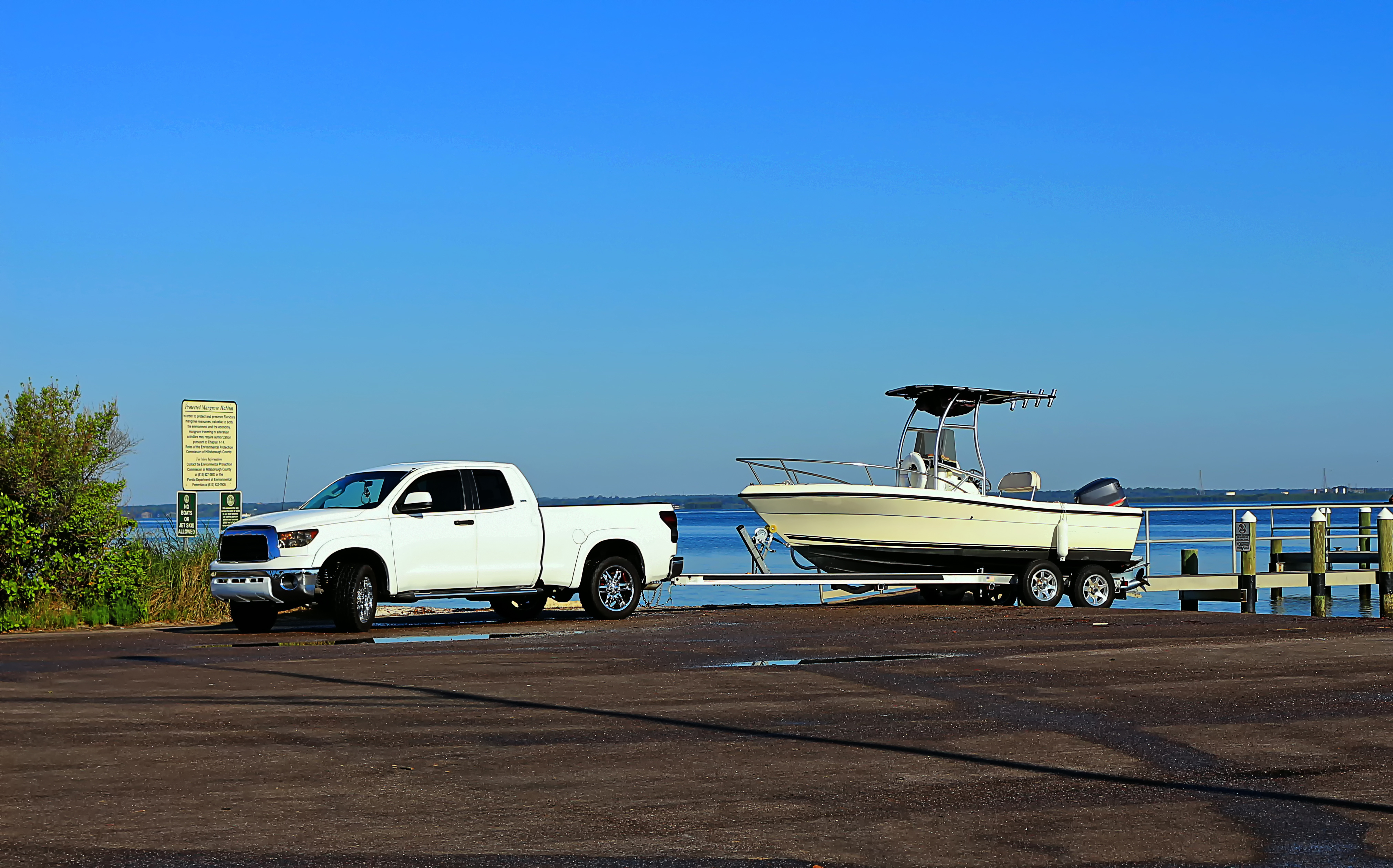These suggestions get me to the water on time, every time.
The most overlooked—and neglected—part of your boat rig is the trailer. It is also the most likely part to fail when you head out on your next trip to the lake. There are only a few components making up your boat trailer—frame, axle(s), axle spindle/bearings and hub, brakes (if any), wheel/tire assembly, wires and lights, and the coupler that attaches the trailer to the vehicle. Let’s look at each of these components to see where problems can arise and how to maintain your boat trailer.
What do your boat, motor, trailer, fuel and typical gear gross?
First and foremost, be sure the tow vehicle is adequate for your boat rig. If it came with a factory-installed towing package, the hitch assembly will have a capacity chart on it. If not, it is recommended that you take the vehicle to your car dealer and have their service department assist you in determining a safe boat rig weight.
Get it weighed! You cannot depend on the selling dealer to have properly sized the trailer for the boat in question. I recently bought a used aluminum boat, but it still had the original trailer under it. After ruining two tires with what turned out to be a warped axle, I weighed the rig with the load I normally carry fishing. The GVW capacity of the trailer was 1,500 pounds, but the rig weighed over 1,800 pounds! The tongue weight was also over 200 pounds (most Web sites recommend a five to eight percent tongue weight). Since replacing the trailer was not economically possible, I ended up extending the trailer length by two feet, putting longer bolsters on, and moving the boat and winch back to reduce the tongue weight. I use a bathroom scale under the front support to get the tongue weight. This will give you a good estimate. I also bought two new tires and a 3500# axle. The $500 cost was not quite half of a new trailer cost, and it would have been totally unnecessary if the dealer had sized the trailer properly in the first place!

Trailer Frame
Make sure the boat is level on the trailer and adjust supports as necessary. Check the wooden bolsters annually, retighten the bolts and replace the wood or carpet as needed.
Axles
When driving down the road, look at your trailer tires through the side-view mirrors. The tires should be straight up and down. If not, the axle may have been warped by a pothole. If so, time for a trip to the shop.
Spindle Bearings and Hubs
Tires running sideways can also mean the wheel bearings are loose and need repacking with marine grease and adjusting. Do not over pack the bearings as this may blow out the grease seal and cause it to blow out onto the tire and onto the brakes, if so equipped. If this doesn’t solve the problem, it’s time for a trip to the shop to have them replaced. You can do this yourself, but most bearings have to be pressed off. My experience says this is a job for a professional with the right shop equipment.
Brakes
If your trailer is equipped with a braking system, you should check the fluid levels every few trips. Brake lines rusting out and moisture getting in the master cylinder are other areas of concern.
Wheel/Tire Assembly
Verify that the tires on your boat trailer are ST rated (special trailer). Auto tires have much more flex in the sidewall, and therefore, less strength, while trailer tires have a stronger sidewall load rating. Passenger tires tend to make the trailer behave more “squirrelly”. Be sure to check the tire air pressure and always inflate the tires to the recommended level indicated on the tire.
Wiring and Lights
This is probably the most common problem encountered on boat trailers. Frayed and corroded wires occur with uncommon frequency. Remember to coat all bulb sockets and connectors with dielectric grease to minimize corrosion. Don’t forget the connector attaching the car electricity to the trailer.
Coupler/Hitch/Ball
Couplers come in various heights, from straight up to six-inch drop/rise. If your trailer isn’t level with the ground when attached to the vehicle, replace the drawbar/coupler with the correct one. The best way to check it is to measure the distance from the trailer frame to the ground at each end of the trailer while it is attached to the tow vehicle.

Conclusion
Remember, boat trailers are regularly stolen from the tow vehicle while parked at the launch ramp. Play it safe and install a locking pin to hold the drawbar to the hitch; likewise, place a lock in the coupler ball clamp hole.
Think about all the time you spend on your rods and tackle or on researching where and on what the fish are biting. All your effort will be for naught if your boat rig doesn’t make the round trip to your waterway. Spend a little time checking your trailer; keep it in good working order, and have a great day fishing!




